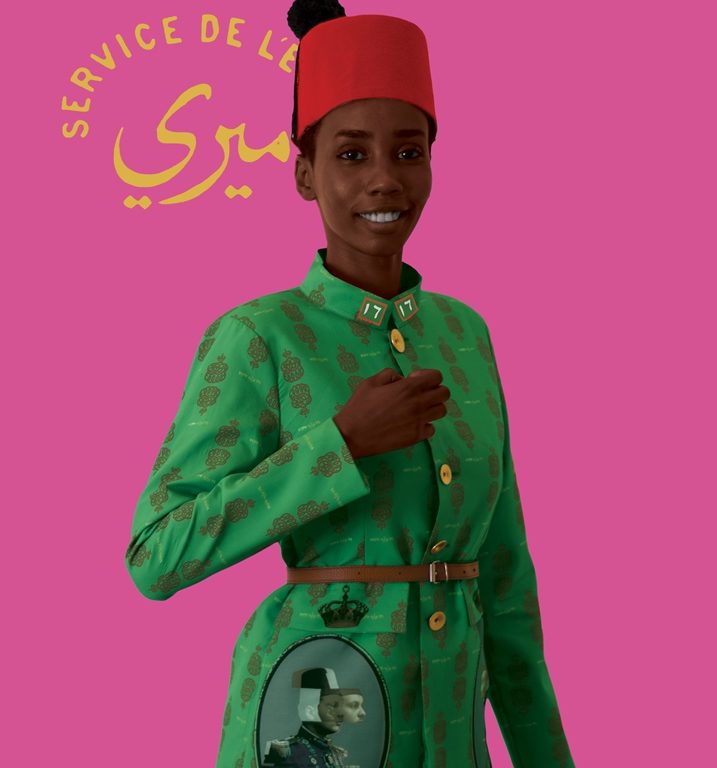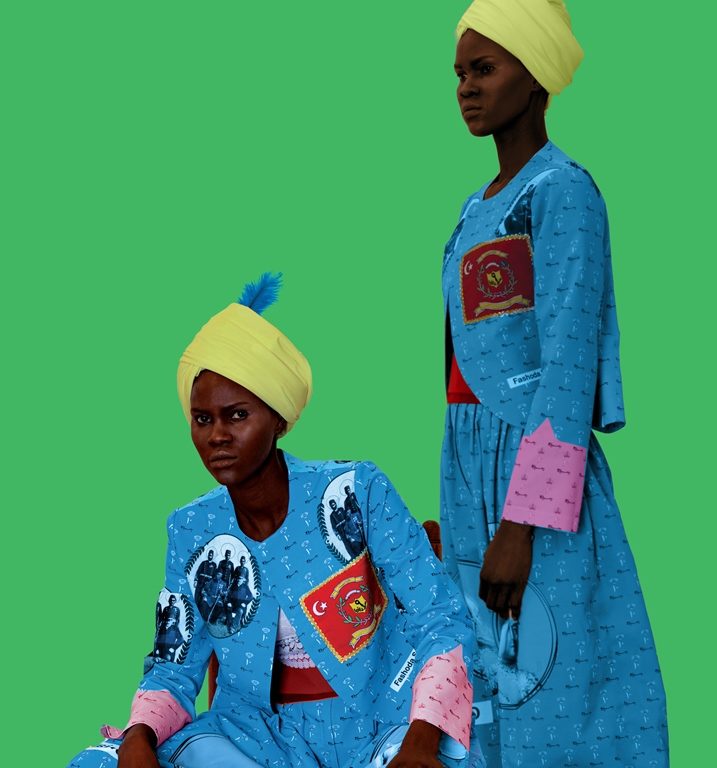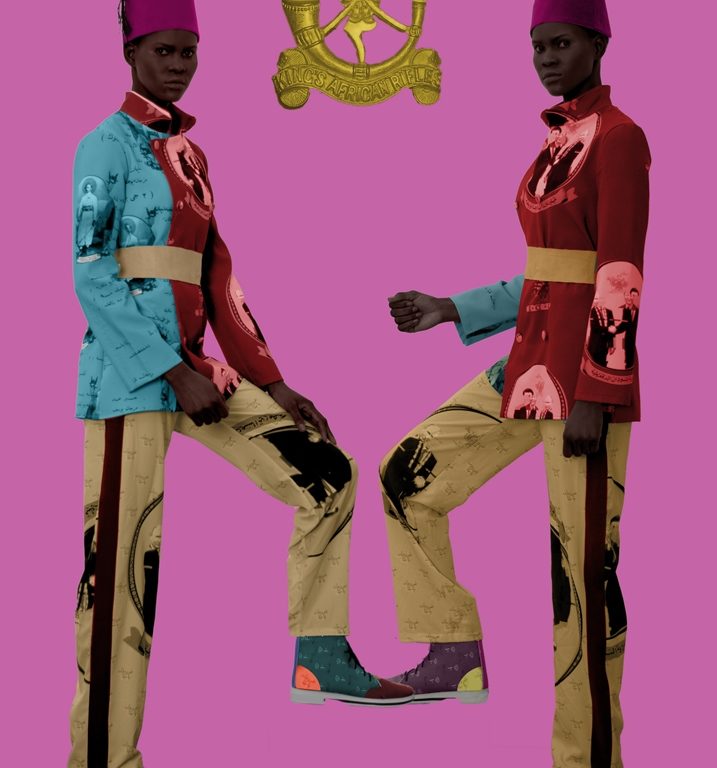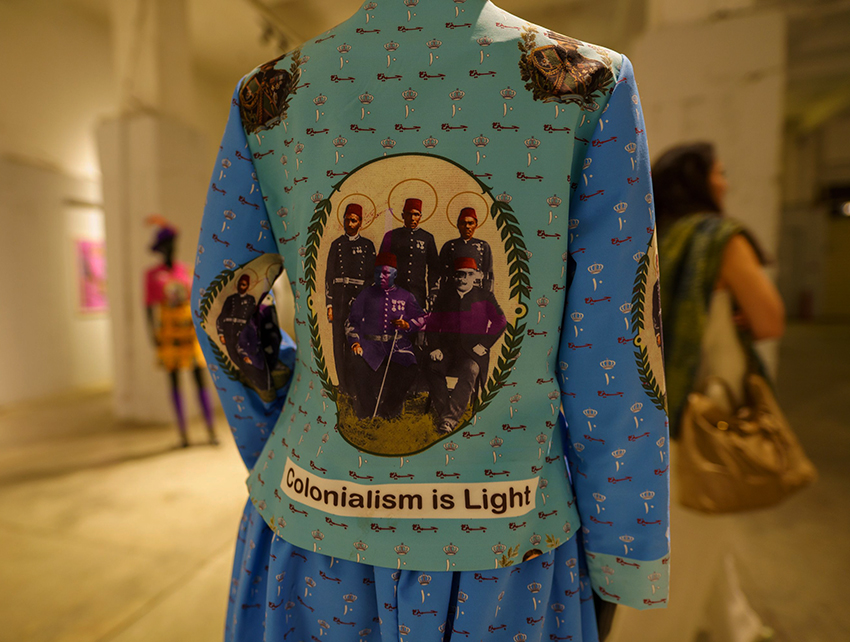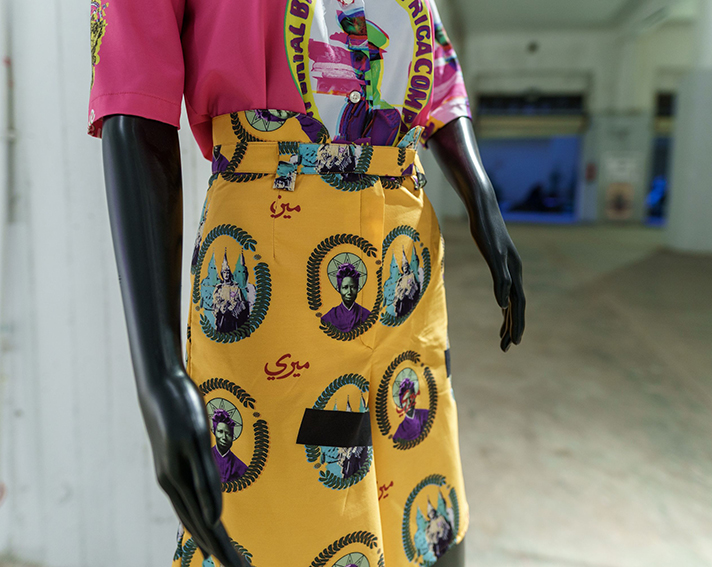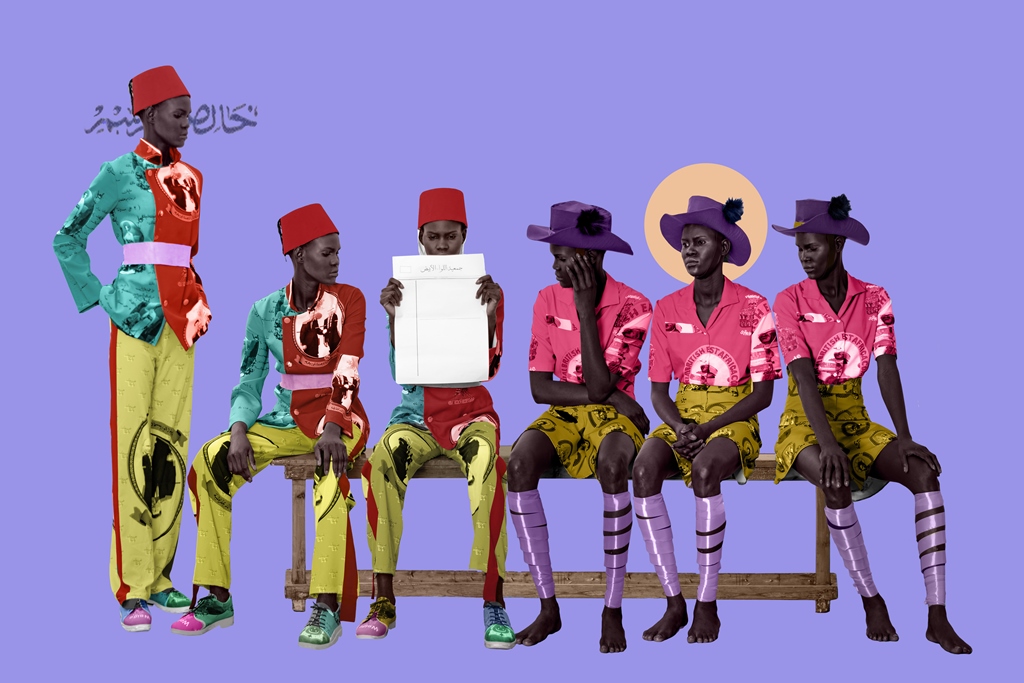Askari
Askari is a research-based study on the history of “Askari” (from Swahili and Arabic, meaning soldier, or military), Askari was an enslaved Sudanese soldier, from the region of the Sudan بلاد السودان (East, central, and western Africa) Askari battalions served in the armies of European colonial powers in Africa during the 19th and 20th Centuries. During both World Wars, Askari units served outside their colonies of origin, in various parts of Africa, the Middle East, Asia, and Central America.
By recreating visual records of the Sudanese soldiers in colonial modern history, the work comprises a series of printed images and patterns print fabrics, arranged into a photomontage based on images from the colonial archives.
The concept of work was essentially based on two elements: the Askari archived colonial photos and uniforms, and the concept of the Dutch wax prints. The Dutch prints / Ankara (West African textile) were represented by the Netherlands to the Dutch Gold Coast (Ghana), which was later extended to the rest of the West African market. The printed fabrics quickly integrated themselves into African apparel; the Ankara fabric was used as a method of communication and expression, with certain patterns being used as a shared language and widely understood meanings. Following the same tradition, by using iconography associated with the colonial era and the Anglo-Egyptian period (including Queen Victoria and their totemic events of the time such as the Battle of Omdurman, saint Bakhita, and other iconographies) and transposes them into a complex installation that includes photography, costume design, and printing onto fabric.



